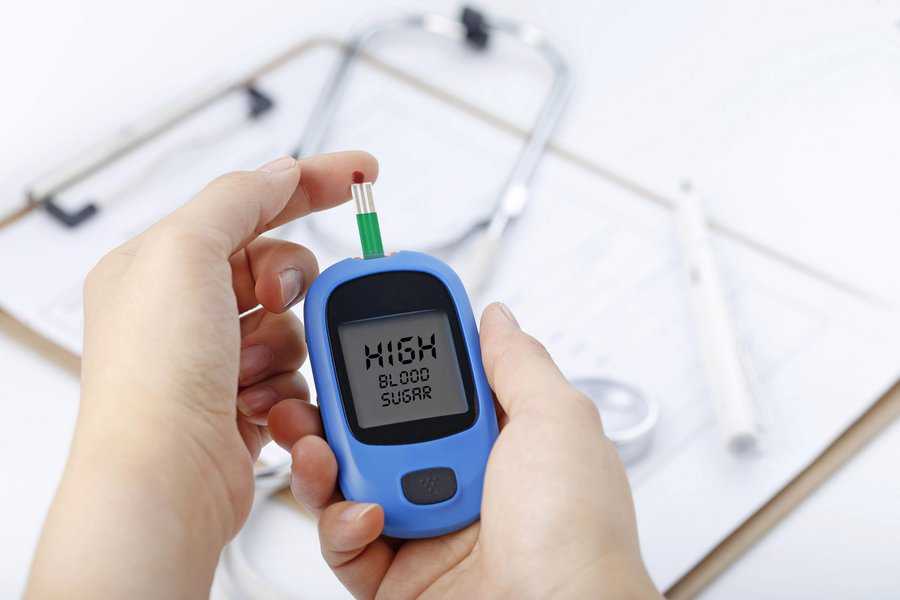Diabetes is one of the most common health conditions faced by millions across the world. Diabetes or Diabetes Mellitus is a condition in which your blood glucose, or blood sugar, levels are too high. Blood Glucose is produced from the food you eat. Insulin is a hormone produced by the pancreas that regulates blood sugar, helps the glucose from food get into your cells to give energy. Diabetes can occur when the pancreas doesn’t produce insulin or it doesn’t produce much or is not able to utilize the insulin produced effectively. Then, the blood glucose from food will stay in your blood and doesn’t reach your cells, causing several health problems that may be serious or even life-threatening. Untreated high blood sugar from diabetes can damage your nerves, eyes, kidneys, and other organs. But, if you maintain a healthy lifestyle, along with Ayurvedic herbs, can help you maintain and regulate your sugar levels.
Different Types of Diabetes
Type 1 diabetes or insulin–dependent diabetes:
A chronic condition in which the pancreas produces very little or no insulin. It is an autoimmune disorder in which your immune system attacks and destroys the cells in your pancreas that produce insulin. This type of diabetes is most often seen in children. It used to be called juvenile-onset diabetes, but it can occur at any age. People with type 1 diabetes take insulin every day to replace the insulin their bodies are not making. People with type 1 have a higher risk of heart disease and stroke. There are health problems that happen as a result of Type 1 diabetes are:
- Diabetic Retinopathy (damage of blood vessel in your eyes)
- Diabetic Nephropathy (damage of kidneys)
- Diabetic Neuropathy (damage of nerves in your legs and feet)
Type 2 diabetes
Type 2 diabetes is the most common type of diabetes affecting 90–95% of people. It’s a condition in which your body does not produce or use insulin well. It occurs when your body becomes resistant to the action of insulin (when your cells don’t respond to insulin) and sugar builds up in your blood, not able to carry sugar into the cells. Although the body makes some insulin, it is not enough to overcome this resistance. Your chances of getting Type 2 Diabetes are higher, if you are overweight, have a family history of diabetes, or have a history of diabetes during pregnancy. You can get type 2 diabetes at any age, even during childhood. However, this type of diabetes can be seen in middle-aged and older people. Type 2 diabetes can cause major health complications, especially in the tiny blood vessels in your kidneys, nerves, and eyes and the chances of getting heart disease and stroke are higher.
Gestational diabetes
Gestational diabetes occurs when blood sugar is high during pregnancy. The hormones produced by the placenta blocks the insulin causing this type of diabetes. It usually goes away after birth but, you have a greater chance of developing type 2 diabetes later in life. It’s essential to control gestational diabetes to protect the baby’s growth and development as the mother’s blood sugar travel through her placenta to the baby.
Prediabetes
Prediabetes occurs when your blood glucose levels are higher than normal, but not high enough for a diabetes diagnosis. If you have prediabetes, you are at much higher risk of developing type 2 diabetes. It is difficult to find out the symptoms of prediabetes and many people have this condition but do not know that they have it. This can increase your risk of heart disease and stroke. With lifestyle changes, weight loss, and treatments, it’s possible to bring a blood sugar level back to normal.
Monogenic diabetes
Monogenic diabetes is a rare type of diabetes which is an inherited form of diabetes.
(Also Read: 11 Foods that boost our Immune system naturally)
Symptoms of diabetes
The symptoms of diabetes are caused by high blood sugar. You might not know that you have type 2 diabetes until you have diabetes-related health problems, such as blurred vision or heart trouble. About 1 in 4 people with the condition don’t know that they have it. Symptoms which include:
- Increased thirst and hunger – when sugar piles up in your blood, your kidneys will work more to eliminate it. This pulls fluids from your tissues and keeps you dehydrated thereby feel thirsty. Diabetes can stop glucose from entering into your cells, therefore you feel hungry even after you have eaten.
- Frequent urination – your kidneys are working more to get rid of extra sugar in your system.
- Sudden weight loss – when you lose sugar from frequent urination, you lose calories too causing weight loss.
- Extreme tiredness – when your body can’t use energy from food, you feel tired. Dehydration can also make you feel tired.
- Dry mouth – dehydration and urination can lead to drain moisture from your mouth as well.
- Blurred vision – high blood sugar leads to poor vision.
- Numbness or tingling in the feet or hands – Diabetes can affect nerves in your hands and feet.
- Cuts or wounds that do not heal – high blood sugar can make blood flow slower and harder for your body to heal.
- Men with diabetes may have a decreased sex drive, erectile dysfunction, and poor muscle strength.
- Women with diabetes may have urinary tract infections, yeast infections, and itchy skin.
- Loss of consciousness – After you exercise or when you skip a meal or take too much medication, your blood sugar could go too low, and you could pass out.
- Red, swollen, tender gums – You might be more likely to get infections in your gums and the bones that hold your teeth in place and might become loose.
Causes of diabetes

The causes of Type 1 diabetes are unknown. Scientists think type 1 diabetes occurs when your immune system, the body’s system for fighting infection, attacks and destroys the insulin-producing beta cells of the pancreas. They think genes and environmental factors may play a role in some people.
In the case of Type 2 diabetes, genetic and lifestyle factors play a role in the development of type 2 diabetes. If you are not physically active and are overweight or obese, you are more likely to develop type 2 diabetes, but not everyone with type 2 is overweight. Extra weight makes your cells more resistant to the effects of insulin on your blood sugar. Type 2 diabetes has a stronger link to family history. Family members share genes that make them more likely to get type 2 diabetes and to be overweight.
Gestational diabetes, a type of diabetes that develops during pregnancy, is caused by the hormonal changes of pregnancy along with genetic and lifestyle factors. Women who gain too much weight may already have insulin resistance during their pregnancy are more likely to get gestational diabetes.
(Also Read: Tips for a Healthy Heart Naturally)
Complications
Diabetes increases your risk for many serious health problems. The longer you have diabetes and less controlled your blood sugar, the higher the risk of complications. By following the correct treatment and recommended lifestyle changes, many people with diabetes are able to prevent or delay the onset of complications.
- Kidney disease (nephropathy)- The organ kidney has millions of tiny blood vessels that act as filters. They remove waste products from the blood. Diabetes can damage the filtering system that leads to kidney failure and lose their ability to filter out waste products. Keep your diabetes and blood pressure under control to lower the chance of getting kidney disease.
- Eye complications (retinopathy) – People with type 1 and type 2 diabetes are at a higher risk of developing eye complications. Diabetes can damage the blood vessels of the retina leading to blindness. Also, there is a chance of getting other serious vision conditions like cataracts and glaucoma.
- Nerve damage (neuropathy) – About half of all people with diabetes have some form of nerve damage. Nerve damage from diabetes is called diabetic neuropathy. A large amount of sugar can damage the walls of the tiny blood vessels causing tingling, pain, numbness, or weakness in your feet and hands. If it is untreated, there’s a chance of losing all sense of feeling.
- Cardiovascular disease – If you have diabetes, you’re more likely to have heart disease or stroke. Diabetes is one of the leading risk factors for cardiovascular disease. Lower your risk by keeping your blood glucose (blood sugar), blood pressure, and cholesterol under control with healthy eating, physical activities, and natural remedies.
- Foot complications – People with diabetes can develop many different foot problems. poor blood flow to the feet or nerve damage in the feet is the cause of developing various foot complications. These problems make it easy to get ulcers and infections that may lead to amputation.
- Skin conditions – People with diabetes are also more likely to have infections, including bacterial and fungal infections.
- Alzheimer’s disease – diabetes raises the risk of heart disease and stroke, which hurt the heart and blood vessels. Damaged blood vessels in the brain may contribute to Alzheimer’s disease.
(Also Read: Nutrition for Cancer Patients)
Ayurvedic Treatment for Diabetes
Type 1 and Type 2 diabetes treatment
Living a healthy & happy life with Diabetes is possible with Ayurveda. Ayurveda is the most effective way for diabetes treatment. The ayurvedic solution focuses on the root cause of the disease, it effectively reduces the risk of severe health complications arising out of the untreated underlying cause. In Ayurveda, diabetes is referred to as ‘Madhumeha,‘ which means ‘sweet urine’. It refers to the high blood sugar level in the blood that causes excess sugar in the urine as well.
In Ayurveda, there are three fundamental doshas: Vata, Pitta and Kapha. Diabetes occurs because of imbalance in either of the doshas. Type 1 diabetes is described as an imbalance of the Vata (air and wind) dosha. Type 2 diabetes is an excess of the Kapha (water and earth) dosha. When the Kapha dominance is not counterbalanced with a balancing diet and lifestyle, it can manifest as diabetes. When the Kapha Dosha is imbalanced and it is compounded with a weak Agni, it slows the metabolism. This leads to problems with excessive sugar levels in the body. A person who is Kapha dominant should ensure that there are enough air and fire elements in their food and habits.
Ayurveda is known to be a holistic healing practice and prevent diseases from entering the body. A few lifestyle changes, along with Ayurvedic herbs for diabetes, can help you maintain and regulate your sugar levels. Ayurvedic herbs have been a part of traditional medicine for thousands of years.
Some of the major herbs that are used for treating diabetes are:
Amla or Indian Gooseberry (Emblica Officinalis)
Amla is one of the most potent herbs in Ayurveda rich in vitamin C and antioxidants, this property of amla makes it beneficial for diabetic patients and also boost immunity levels to stop flare-ups of Seborrheic dermatitis. According to Ayurveda, amla juice is known to balance all three doshas- Vata, Pitta, and Kapha. Amla contains minerals like chromium, calcium, iron, and phosphorous. Chromium helps in carbohydrate metabolism and also allows your body to respond to insulin and keeps the blood sugar under control. The rest of the minerals helps in the absorption of insulin and regulates blood sugar levels. Regular consumption of amla juice helps in cholesterol levels. The amino acids and antioxidants present in amla, aids in the overall functioning of the heart, as well as respiratory illness like asthma.
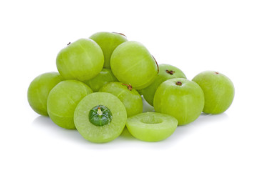
You can consume amla raw, salted, juiced or even powdered. Around 20 ml of juice with a pinch of turmeric powder and black pepper, taken twice a day can be immensely good for the diabetic patient.
Amalaki (Amla) liquid extract (BUY HERE)
Cinnamon Powder
Cinnamon Powder is one of the ayurvedic herbs with numerous health benefits, an aromatic spice derived from the bark of Cinnamomum trees. Cinnamon can lower blood sugar by acting like insulin and increase insulin’s ability to move blood sugar into cells and increase the conversion of glucose to energy.
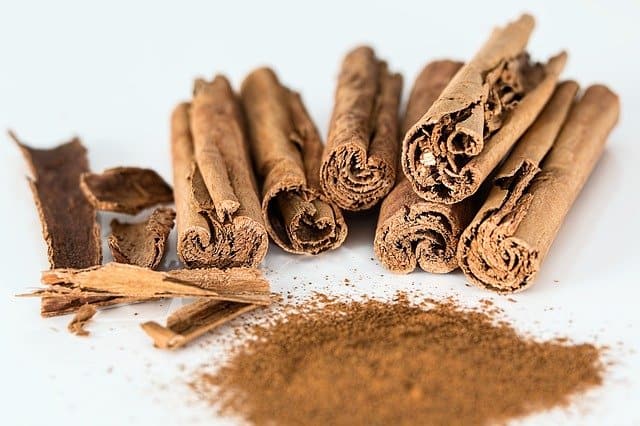
Take 1 – 1.5gm Cinnamon and put it in the hot water and boil it till the color changes and consume this cinnamon drink on a daily basis. or One can have 1 cinnamon capsules after breakfast and dinner with lukewarm water.
Bitter Melon or Bitter Gourd (Momordica charantia)
Bitter Melon is a traditional medicine that has been used for the treatment of diabetes for centuries. Bitter Melon has Charantin, the main active ingredient responsible for the hypoglycemic properties. It has similar effects on many hypoglycemic drugs used in diabetes treatment. Bitter melon carries insulin-like peptides that mimic the activity of physiological insulin to promote additional blood sugar support.
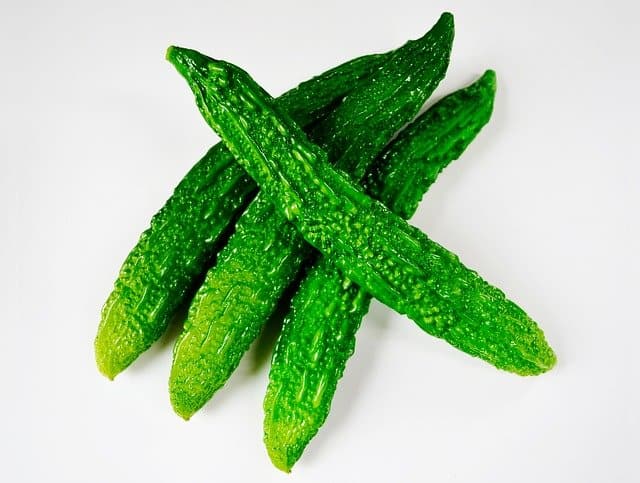
According to Ayurveda, bitter melon’s benefits are more effective when consumed raw. Drink a glass of juice made with 1/2 bitter gourd, 1/2 cucumber, 2 celery stalk, and 1/2 green apple once a day.
Triphala
Triphala is an ancient herbal preparation used in Ayurvedic treatments. It’s a combination of three dried herbs: Indian gooseberry (Emblica Officinalis), black myrobalan (Terminalia chebula), belleric myrobalan (Terminalia bellirica). The Triphala can be used for diabetes as it helps in lowering the blood sugar levels. Triphala may have various health benefits such as improving digestive and oral health, supporting skin healing, helps in arthritis, stress, and anxiety, act as a natural immunity booster. It also contains powerful antioxidants that maintain a healthy heart and stable respiratory functions as well.
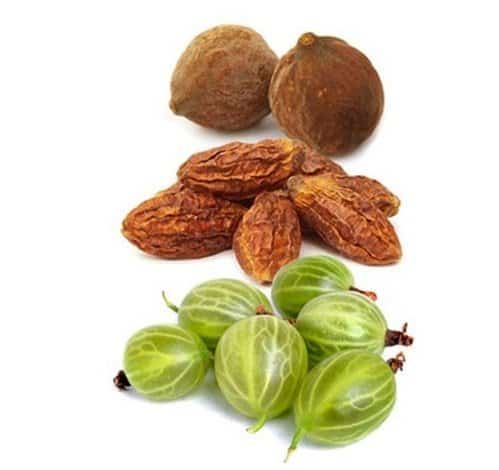
A glass of Triphala juice or 2 Tbsp. powder every day is effective. Always check with your doctor or health care provider before consuming supplements.
Triphala liquid extract (BUY HERE)
Gymnema Sylvestre(Madhunashini/Gurmar) or sugar destroyer
Gymnema Sylvestre helps in maintaining healthy blood sugar levels in the body. The leaves have been used in Ayurveda for thousands of years. The active ingredient, Gymnemic acid, suppresses sweetness, and make sweet foods less appealing. Gymnema Sylvestre can block the sugar receptors on your tongue, decreasing your ability to taste sweetness. This can lead to reduced sugar cravings. Gymnema helps the pancreas with insulin production in type 2 diabetics and increases the sensitivity to insulin in type 1 diabetics.
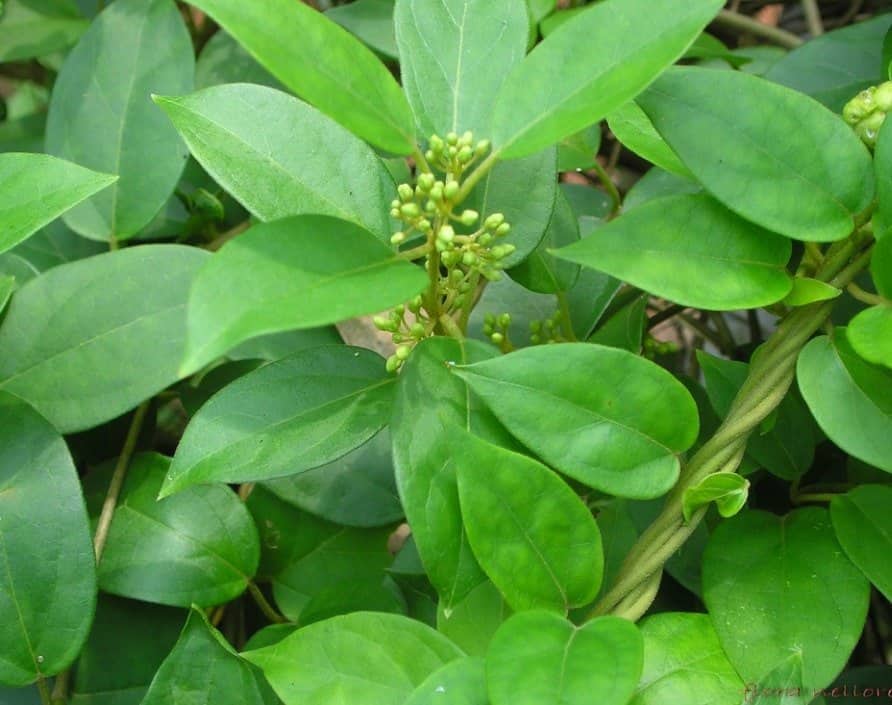
The recommended dosage for Gymnema Sylvestre depends on the form in which you consume it.
- Tea: Boil leaves for 5 minutes, then let steep for 10–15 minutes before drinking.
- Powder: Start with 2 grams, increasing to 4 grams if no side effects occur. 1/2 – 1 teaspoon with warm water up to twice daily or as directed by your health practitioner.
- The leaves can be chewed daily or 1 -2 gm of powder with cow’s milk or honey on empty stomach. For cough, you can make a decoction of bark roots by boiling in water. It will loosen the mucus from the respiratory tract.
Fenugreek or Methi
Fenugreek is an aromatic plant that has many uses, both culinary and medicinal. Both leaves and seeds are used in Ayurvedic medicine. Fenugreek seeds are a rich source of soluble fibers that helps lower blood sugar by regulating the digestion and absorption of carbohydrates and sugar. It has also been shown to support HDL (good cholesterol) levels and lowering triglyceride and LDL cholesterol effects.
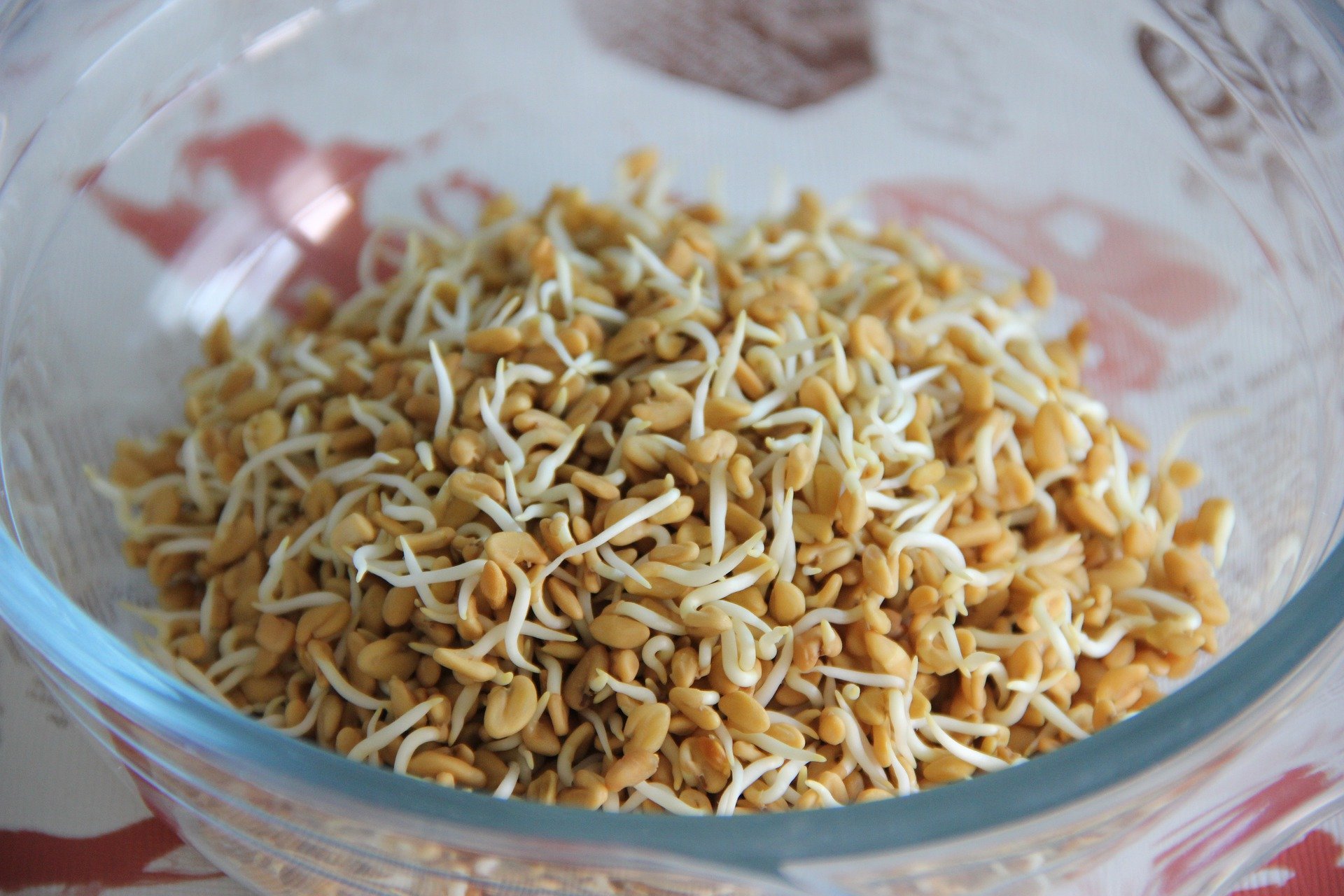
You can soak the fenugreek seeds in warm water and consume the water the next day in an empty stomach, you can even eat the soaked fenugreek seeds. Another way to eat fenugreek seeds is by sprouting them which enhances the digestibility of food. It helps assimilate and absorb nutrients better during digestion. Grind seeds of Fenugreek (100 gm). This Fenugreek powder is then mixed with turmeric powder (25gm). This mixture should be consumed with a glass of milk twice a day. Always consult a doctor before taking any supplement, there is a chance that fenugreek may cause hypoglycemia (low blood sugar ) when taken along with prescribed diabetes drugs.
Giloy (Tinospora Cordifolia) or Guduchi
Giloy is a magical Ayurvedic herb (is known as the queen of all herbs) full of health and medicinal benefits that have been used and advocated in Indian medicine for ages. As per Ayurveda, Giloy can be consumed in powder, juice, or decoction form, it is anti-inflammatory, anti-arthritic, anti-allergic, anti-malarial, and anti-diabetic. Giloy helps increase the production of insulin also acts as a hypoglycaemic agent that helps the body in lowering glucose levels in the system. It’s known to burn down extra glucose, making it easier for the body to moderate blood sugar. The stem of giloy is considered highly effective because of its high nutritional content and the alkaloids present in it.

- Giloy can be consumed as fresh juice (10 to 20 ml) or powder form (3-6 gm) and decoction (20 – 30ml) twice a day regularly.
- Mix a glass of freshly strained Giloy juice, made from its stem and leaves, with a few drops of lemon juice and drink it first thing in the morning.
- For Decoction, add 2tsp of giloy powder in a glass of water and boil it till gets ¼. Let it cool down and sieve it well. Consume it on an empty stomach in the morning and evening. You can add tulsi leaves with giloy powder for better results.
Malabar kino/ Indian Kino tree / Vijaysar(Pterocarpus marsupium)
Indian Kino has been used in Ayurvedic medicine for diabetes treatment for a long time. The bark of the plant is used for the medicine and is called “the miracle cure for diabetes”. The anti-diabetic action of these drugs is due to the presence of bioactive compounds like iso-flavonoids, terpenoids, and tannins. It can be used to reduce diabetic symptoms such as overeating, over thirst, frequent urination, and also pain in the limbs. In Ayurvedic treatment, the diabetic patients use Indian Kino tree tumbler to drink water. Drinking water from this tumbler can lower down the blood sugar level. The tumbler is made out from the heartwood of the Indian Kino tree. The water kept for a number of hours in the tumbler results in the release of its essence to the water. Indian kino powder is highly effective in pacifying the Kapha and pitta dosha. This is used not only for curing type 2 diabetes but also used to treat a group of diseases like Eczema, Psoriasis, obesity, diarrhea, and cholesterol.
Paneer Dodi / Indian Rennet / Withania coagulans
Indian Rennet is a flower found in India and used in Ayurveda for many years. The fruits of the plant have sedative and diuretic properties. It is said to combat insomnia, nervous exhaustion, asthma, and diabetes. The plant controls the insulin levels inside our cells and repairs the beta cells of the pancreas for better utilization of insulin. In diabetics, beta cells present in islets of Langerhans are damaged; hence the patient with type-2 diabetes is unable to produce insulin, which is why an outer source is required.
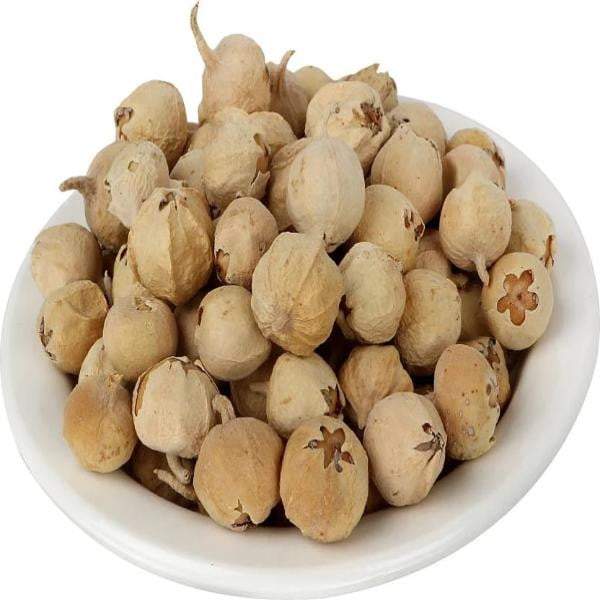
Take 7-10 pieces of paneer dodi soaked overnight in water. Now boil the flowers in the same water in a saucepan to ensure that all the goodness has been extracted from the flower. Strain the water and drink it every day on an empty stomach. Consult a doctor or an Ayurvedic expert before switching to this herb for managing diabetes.
Natural and Home Remedies
Diabetes treatment at home
Ayurveda recommends a holistic treatment that involves a lifestyle change, medication, and a well-balanced diet. A few lifestyle changes, along with Ayurvedic herbs for diabetes, can help you maintain and regulate your sugar levels. The natural treatment of diabetes in Ayurveda involves:
- Maintain a proper diet, you have to limit your carb intake because carbs are broken down to create glucose, thereby raising the sugar levels. Reducing your carbohydrate consumption is a natural way to control sugar. Give up sugar and sweets completely and replace it with honey or jaggery.
- Choose a healthy diet that has low in fat, cholesterol, and salt. Increase the number of fresh fruits and vegetables, whole grains, brown rice, and a high fiber diet can help to improve the overall health and also helps to maintain healthy blood sugar levels. Include spices which has anti-diabetic properties such as cardamom, cumin, coriander, and turmeric to the diet, which may improve digestion and absorption. Include vegetables and fruits that are bitter. Certain foods such as eggs, organic lean meat, oysters, pomegranates, avocado, leafy green vegetables, and healthy oils (e.g., olive oil) stabilize blood sugar and foster heart health.
- Maintain a healthy meal plan: Eating 4-5 small meals spread throughout the day can be helpful to minimize glucose load with each meal. Each meal should be an equal amount of proteins and carbohydrates.
- Another way to stabilize your blood sugar is by drinking warm turmeric water, first thing in the morning, on an empty stomach. Curcumin, in turmeric, has the potential of reversing the damage caused to the pancreas with increased production of insulin-secreting beta cells. Turmeric is one of the strong herbal remedies for eczema, can be used both internally and externally.
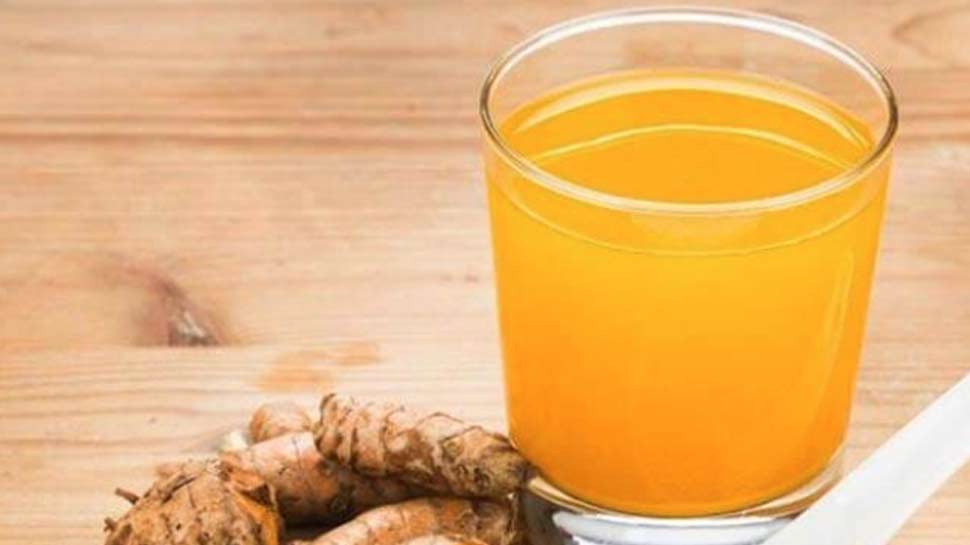
- Turmeric water
- Ginger tea is also a natural way to control sugar, helps stimulate digestion and it can also help keep your sugar at a stable level while reducing the excess Kapha in your system. Ginger tea is also used for arthritis because of its anti-inflammatory properties.
Ginger Liquid Extract (BUY HERE)
(Also Read: Ginger Oil: The magical medicine)
- Regularly taking aloe vera juice may help improve blood sugar control in people with Type 2 diabetes and prediabetes. The antioxidant property of aloe vera may help protect and repair the beta cells in the pancreas that produce insulin, which allows cells to use glucose. Aloe has also been used in several health issues for topical skin issues, weight loss, decreased cholesterol, etc.
- Drink water from the copper vessel – place one cup of water in a copper vessel at night and drink the water in the morning has been considered very healthy for the overall functioning of the body.

- Home-Made Powders: Make a concoction of fenugreek powder, jamun seed powder, neem powder and bitter melon powder, all in equal proportions. Consume about 1 teaspoon of this mix, half an hour before lunch and dinner along with water.
- Don’t miss regular health check-ups and blood tests.
- Avoid alcohol and smoking.
- Exercise and practice yoga regularly can stimulate the immune system, reduce stress, and provide blood sugar benefits.
In today’s stressful lifestyle, it’s easy to get carried away with unhealthy habits which leads to medical traumas like high blood pressure, cardiac arrests, and high cholesterol. All these signs come together and lead to diabetes, but if you maintain a healthy lifestyle, along with Ayurvedic herbs, can help you maintain and regulate your sugar levels. Also, consult with your doctor before taking on any type of medication.
Disclaimer: Content on this site is for reference purposes and is not intended to substitute for advice given by a physician, pharmacist, or other licensed health-care professional. You should not use this information as self-diagnosis or for treating a health problem or disease. We use Affiliate links as this is our means to survive. We by no means solicit any products for any company. Please take professional guidance or a doctor’s advice before taking these medicines as every individual is different and circumstances are different for all. We by no means will be held responsible for any bad effects that can come out of using these medicines.
For the latest articles and health tips, like us on Facebook, follow us on Twitter, and Subscribe on YouTube

